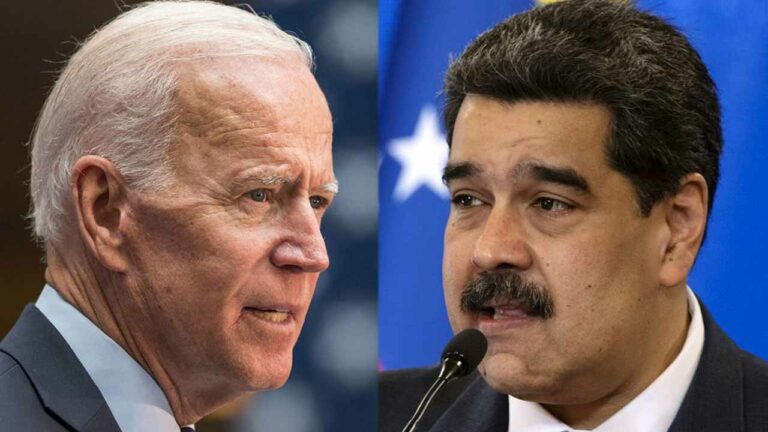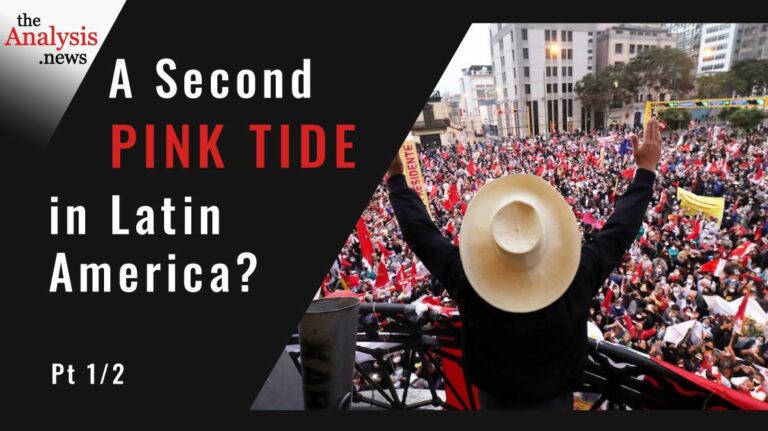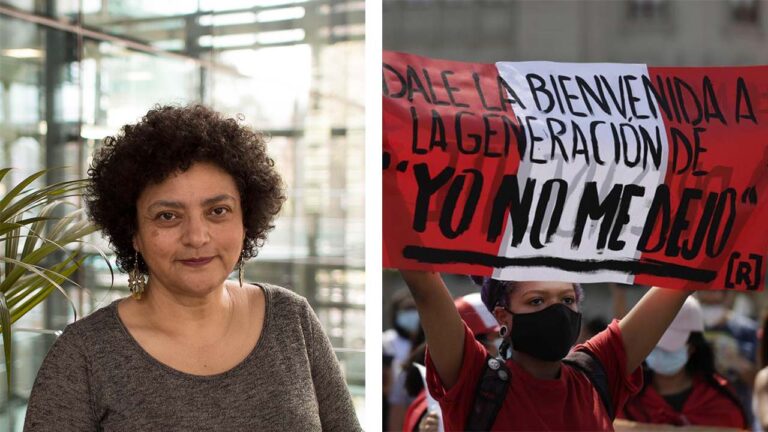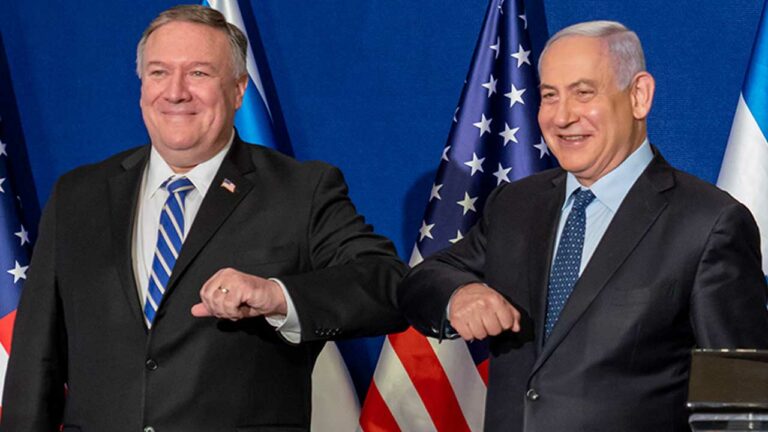Peru: Left vs. Far-Right – Dramatic Choice in Presidential Election
Pedro Castillo, a leftist, unexpectedly won first place in Peru’s first-round presidential election last Sunday. However, he now faces far-right second-place finisher, Keiko Fujimori. The outcome was largely due to a completely delegitimized political class in Peru, says Peru analyst Francesca Emanuele.
Transcript
Greg Wilpert
Welcome to theAnalysis, I’m Greg Wilpert. Two presidential elections took place in Latin America last Sunday. One of them was a first-round election in Peru and the other was a runoff election in Ecuador. In another segment, we discussed the Ecuadorian election. In this segment, we’ll take a closer look at the election in Peru in which 18 candidates competed and where the top two finishers now head for the runoff election, which takes place in June. The two winners of the first round were a leftist candidate, Pedro Castillo, with 19 percent of the vote, and a far-right candidate, Keiko Fujimori, with 13.2 percent.
Joining me to analyze Peru’s first-round election results is Francesca Emanuele. She’s a Peruvian graduate student in anthropology at American University and is also a columnist for the Peruvian news outlet Wayka. Thanks for joining me today, Francesca.
Francesca Emanuele
Thank you for inviting me, Greg.
Greg Wilpert
So before we get into the election results, let’s start with the context in which this election took place. Peru has faced a lot of political instability in recent years with four presidents in the past five years, only one of whom was actually elected, and also the polls show that most Peruvians are tired of the whole political class. Now, what has been going on and why has there been so much political instability in Peru recently?
Francesca Emanuele
Yeah Greg, so as you said, the Peruvian population is sick and tired of politicians, they have lost their trust in politicians and the main reason is corruption. Just last November, there was an impeachment against our former president, Martin Vizcarra. Thousands of people went to the streets to reject this impeachment because they claimed that leaders or legislators in Congress led this impeachment because Martin Vizcarra was having a campaign against corruption in these congressmen and women, who were under investigation for corruption.
What we know now is that there were grounds for these accusations against Martin Vizcarra, accusations of corruption, but there were also grounds for accusations against these legislators in Congress. Just in these elections, most of the 18 presidential candidates are facing criminal charges and many of them because of corruption as well, but adding to this, we have a horrible pandemic, and in Peru, since the pandemic has started, more than one hundred fifty thousand people have died.
This has exposed, revealed, and highlighted the deep inequalities that exist in Peru, despite the fact that the IMF and the World Bank has been praising the economy of Peru as one of these wonderful countries in Latin America that everybody in Latin America should follow, but with this pandemic, we have seen clearly these inequalities, when rich people were able to buy oxygen and buy beds or pay for beds in hospitals and clinics, while poor people have had to die on the streets. So they realize even more of these inequalities during this pandemic, and this is the context where these elections took place, people fed up with politicians and people fed up with the economic model as well.
Greg Wilpert
Now, the fact that Pedro Castillo got over 18 percent, that is 19 percent actually of the vote with 95 percent of the ballots counted, was actually a bit of a surprise, and that is even though it’s a relatively low percentage in the scheme of things. He’s the front runner now for the runoff election in June. Now, how did he get there? Wasn’t another leftist, Veronica Mendoza, who almost made the runoff in the presidential election in 2016, much better known than Castillo? And why didn’t she do better?
Francesca Emanuele
Yeah, I, have three reasons for that. The first one is that Veronica Mendoza was seen as a politician. She was actually running for the second time. This time she had been a congresswoman, and as we said before, people in Peru are sick and tired of politicians, and while Pedro Castillo wasn’t seen as a politician and this is one of the reasons, the other reason is that people who support, who voted for Pedro Castillo are people located in the Andes, in the center of the country, and they see Pedro Castillo as someone like them.
They identify with him, and even though Veronica Mendoza was born and raised in the Andes too in Cuzco, she studied abroad, her mother was from France, and Veronica Mendoza has a very academic discourse, while Pedro Castillo created a sentiment of working-class people understand him, his discourse is better, and finally, there were many years when the academic groups and the mainstream media were attacking constantly Veronica Mendoza because she’s a leftist candidate.
While Pedro Castillo rose in the polls in the last four or five days before the elections, and there was not enough time for a coordinated attack, a strategic attack by the economic forces and also the mainstream media. There are some people who think that Veronica Mendoza lost because she has a moderate narrative, a moderate discourse. Well, I think that’s not accurate. I feel that Pedro Castillo and Veronica Mendoza have a lot of similarities in terms of their economic positions. I think it was how it was presented, these proposals and especially who were present in them, like Veronica Mendoza, who is from the Andes, but who doesn’t like people, can identify her directly. Well, Pedro Castillo, people can see themselves in him.
Greg Wilpert
So let’s dig a little bit deeper in terms of who is Pedro Castillo, that is, what does he stand for and who does he represent? And also, if you could say something about the effort to link him to The Shining Path and what that means for his candidacy.
Francesca Emanuele
Yeah, so Pedro Castillo is a schoolteacher, rural school teacher, he’s a farmer, he considers himself a peasant, and he doesn’t identify himself as an indigenous. He doesn’t speak Kichwa, but he definitely considers himself a peasant. Nobody in the history of the Peruvian republic has reached the second round. Nobody like him with so little economic resources. His campaign cost 8 thousand dollars. So this is a victory for Peruvian working-class people, for Peruvian people who were forgotten and neglected for many years. So that’s one thing about Pedro Castillo, he was known in 2017 when he was leading a teachers strike, and then we didn’t hear from him until now that he’s running for elections.
He is economically progressive but socially conservative. So he proposes an economic model like the economic model in Ecuador under Correa and Bolivia under Evo Morales. He proposes nationalizing strategic natural resources. He proposes reviewing the mining projects, and he proposes a new constitution that would replace the constitution that was approved under the Fujimori dictatorship, the dictatorship of Alberto Fujimori, but he has contradictions, as I said, economically progressive but socially conservative. So he’s against abortion.
He’s against gay marriage. He’s arguing against gender equality, and he’s against something that we call in Latin America, the gender approach, which is an inclusion in the economic education curriculum of gender equality, and this idea that the gender is a construction, and regarding what you said about The Shining Path, the media has been attacking him for this, and there is some evidence that members of his party and including himself have some connections with the political branch of this Shining Path, which is called MOVADEF.
Greg Wilpert
Now I want to turn to the other runoff candidate, Keiko Fujimori, who got about 13 percent ahead of everybody else, it seems now, finally, we have the results now, and she’s the daughter of, as you mentioned the dictator Alberto Fujimori and she even has spent time in prison for corruption. Now, with that kind of background, it seems kind of odd that she should still be able to make a runoff election for the presidency of Peru, although she came very close to winning actually in 2016. So how is it that she got so much support and what does she stand for?
Francesca Emanuele
Yeah, so you said she is reaching the second round just with 13 percent of the vote. So she, as you said, is the daughter of Alberto Fujimori because he’s still alive. He’s serving 25 years in prison for corruption and also because he committed crimes against humanity, and she was the first lady for Alberto Fujimori when Alberto Fujimori divorced his wife, who is Keiko Fujimori’s mother. Her name is Susana Higuchi. Alberto Fujimori asked Keiko to be his First Lady, by the way, Susana Higuchi claimed publicly that Alberto Fujimori ordered her torture with electroshocks?
And Keiko Fujimori has been defending her father and not her mother and saying that this wasn’t true? Well, returning to Keiko Fujimori, she was a congresswoman for five years and she has been the leader of the Fujimori party since the dictatorship, and because this party has been having presence in Congress for all these years. So, yeah, of course, her political movement was still alive, and then you see that 13 percent of the vote, she is economically conservative and she is socially conservative.
She believes in neoliberal policies and the striking thing to me and for many people in Peru is that she was in prison for 15 months before this campaign under investigation. The public prosecutor’s office has asked a sentence for her of 30 years because supposedly she received $1.2 million from the Odebrecht real estate company from Brazil to illegally finance her party.
So this investigation is still going on and she is supposed to be be in prison, but because of the pandemic, she’s out and because there’s not a sentence she was able to run, but, yeah, it’s schizophrenic that she is running and she will be in the second round.
Greg Wilpert
That’s really quite something. So now how do you think that Peruvians in general, more specifically the country’s political class, will react to this choice basically between Pedro Castillo, who’s considered to be actually some newspapers have been calling him, at least Western newspapers been calling him extreme left or far left, and then you’ve got Keiko Fujimori, who is no doubt a far-right figure. So do you think there will be alliances formed, particularly? I’m wondering, what are the candidates on the left hand of the spectrum are going to do?
I assume they’re going to support Castillo, but also the more center portion of Peru’s political class. Which way do you think they’ll go to support Fujimori or to support Castillo?
Francesca Emanuele
Well, so far, there have been conversations among the right-wing candidates. We see the two candidates after Fujimori, Rafael Lopez Aliaga, and Hernando de Soto, both got around 10 percent, 11 percent of the vote. So they, I think, will support Keiko, even though they haven’t said it publicly.
Hernando de Soto one of these candidates was an adviser for Keiko Fujimori in the past. The other candidate that got around 11 percent of the vote. Rafael Lopez Aliago also right-wing super conservative millionaire who during the dictatorship of Alberto Fujimori, gained the millions that he has right now because Alberto Fujimori gave him concessions to have a monopoly of the trade that goes from Cuzco to Machu Picchu, but in any case. So these two candidates will, I think, support Keiko Fujimori.
So then you have at least 30 percent of the vote. The other candidates haven’t said anything yet. I think many of them will continue saying Fujimori no jamás, Fujimori never again, because Fujimori has a strong anti-vote against her, but I doubt that these other candidates will support Pedro Castillo unless Pedro Castillo changes some of his proposals.
In the terms of the left yesterday, Verónika Mendoza who is this leftist candidate, that is part of a coalition of leftist parties and leftist organizations, didn’t endorse Pedro Castillo, but said publicly Fujimori no jamás, not even to the corner of your house because you know what Fujimori is and you know that Fujimori supports a dictator. Keiko Fujimori supports the dictatorship of her father. Fujimori by the way, offered that she will pardon her father as soon as she reaches the presidency, but Veronica Mendoza said that she has some doubts about Pedro Castillo and his proposals, especially in the social side. Abortion. LGBT human rights.
But I feel that in the next few weeks we will see that the left will make a proposal to Pedro Castillo to change some of his views, and let’s see, if they will support him. They will endorse him openly. We still have two months to see those arrangements.
Greg Wilpert
The deciding factor perhaps in all of this might be the role of Peru’s business class, and of course, one would assume they would prefer Fujimori over Castillo. I’m just wondering, is that the sense that people get? I mean, how did they fare under the Fujimori government? That is her father’s Alberto Fujimori, and assuming that Keiko would be more or less similar, do you think that would be their preference?
Francesca Emanuele
Yeah, definitely. They are already talking about Keiko Fujimori as the Democratic option, just implying that Pedro Castillo will be the non-democratic option. The mainstream media has been attacking Pedro Castillo, not only because of his connections to the political branch of The Shining Path, but also because Pedro Castillo has said publicly that he doesn’t believe that the Maduro, Venezuelan government, is a dictatorship and mainstream media in Peru is certain that Venezuela is a dictatorship.
So this is another line that we will hear in the next few weeks, but I think that definitely the right-wing media, the economics groups will support Keiko Fujimori. So far, they are not saying it publicly. They are not saying we are going to support Keiko Fujimori, but we will see it in the next weeks, and as I said, they are talking about her as the Democratic option.
Greg Wilpert
One last question just occurred to me. To make a comparison to other right-wing figures in Latin America and around the world. Do you think it would be fair to compare her to somebody like Jair Bolsonaro? Just to get to give people an idea as to where she stands, so to speak, on the political spectrum. Yeah, I think so, definitely. Yeah, she is extremely right-wing and an extremely populist and she is super conservative and she believes in free markets and she thinks that the United States is a strong ally of Peru.
And this model, she calls it like this economic model should continue. We should defend the economic model, she says, and she has not even one progressive position, of course, it’s different in the sense that she has been in politics forever. Right.
And Bolsonaro is relatively new. Right. Even though, of course, he was in Congress, but, yeah, I think we should compare her to Bolsonaro.
Greg Wilpert
OK, well, it looks like it’s going to be very interesting two months leading up to the runoff election and hopefully we’ll come back to you again to see how things turn out. But we’re going to leave it there. I was speaking to Francesca Emanuele, a Peruvian graduate student of anthropology at American University and freelance journalist. Thanks again, Francesca, for having joined me today.
Francesca Emanuele
Thank you.
Greg Wilpert
And thanks to our viewers and listeners for joining theAnalysis. Please don’t forget to head to our website at theAnalysis.news, and make a donation so we can continue to provide programming such as this.
Podcast: Play in new window | Download





